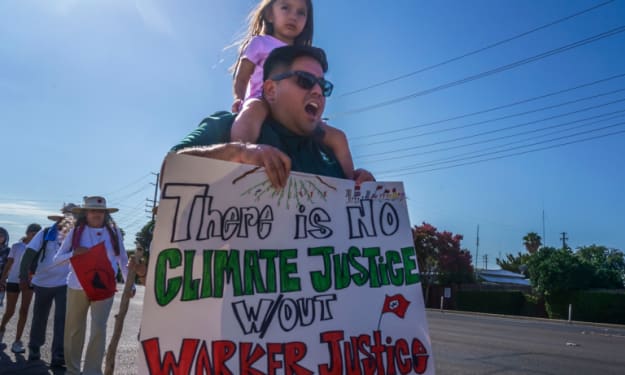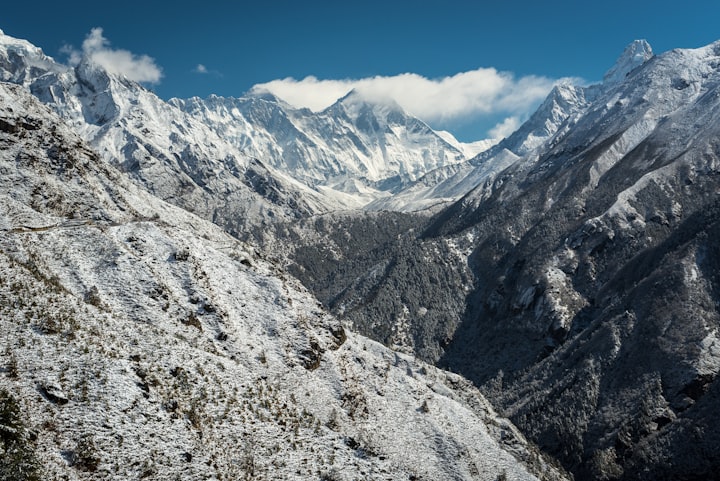Menace II Anxiety
Britt Wray’s new book, “Generation Dread,” has plans for your climate feelings

promises to teach readers how to turn their eco-anxiety into a superpower. In her introduction, she argues that many of us, herself included, are experiencing “tidal waves of grief, anxiety, pessimism, and existential dread” in response to the climate crisis. We need to learn to reckon with these difficult, often immobilizing emotions to become the eco-activists the world needs at 419 ppm and rising.
Fair enough. I’ve seen how unexamined eco-anxiety can cause people to throw themselves into activism in wildly unsustainable ways, and quickly burn out. They attend every meeting and serve on every committee, pushing aside their own needs for rest and care. I’ve also seen the opposite: Friends who suppress their grief and rage over the climate crisis whenever the subject comes up, and never go to meetings or rallies.
Spending time with your feelings of anxiety and anger over the climate crisis might lead you to movement spaces. But it also might not, and Wray’s choice to illustrate her argument with the story of Charlie Glick, a musician in his late 20s, is a perplexing one. Glick’s journey with eco-anxiety begins with an epiphany under a camphor tree. He is gripped by the idea that “the rest of my life is going to be this series of increasingly dire crises,” turns his back on his normal life, and spirals into an obsession with civilizational collapse. After becoming involved with the Sunrise Movement and Extinction Rebellion, Glick realizes that what he really needs to do is to stop “trying to paper over his feelings with action” and to confront his climate despair.
For Glick that looks like . . . retreating from activism to move in with his elderly aunt, Wilma, so she doesn’t have to be alone. In an email exchange with Wray, Glick explains his new mindset: “Whether I decide to keep doing music or go learn organic agriculture almost doesn’t matter to me anymore . . . I just want to do what brings me joy, instead of caring for the Earth out of some lofty feelings of morality or this ‘we’re going to starve or die in armed conflict if we don’t all change our way of life ASAP’ mindset that was plaguing me.”
Wray asserts that Glick’s “tale is far from over; more emergent actions await.” But it’s too early to tell. Wray’s speculations are pretty rickety scaffolding for the argument that the emotional processing Glick has done, which she terms “internal activism,” is “just as important as external activism—the more conventional kind.”
The personal can also become political, Wray argues, when we use our grief and rage to transform the minds of people in power. Public mourning rituals, she writes, can make those who are responsible for the climate crisis “witness people’s pain, and connect with their own culpability for having allowed it to continue in the first place.” From there, change will presumably come.
I wish I could imagine a world where Rex Tillerson’s cold, cold heart could be melted by public mourning rituals. But if fossil fuel CEOs were going to be moved to strand trillions of dollars in fossil fuel assets because they “witness[ed] people’s pain,” we’d be well on our way to a stable climate right now.Wray covers another form of public grief and anger in the chapter “Baby Doomers,” in which she examines how anxiety over having children in the age of climate crisis could “become a unifying platform we might harness to advance justice and climate action.”
Unfortunately, BirthStrike, one of the groups that she uses as an example of this platform, also shows why it is so rare for personal choices to whirlwind into mass movements. Two years ago BirthStrike disbanded its political action wing and re-formed as a support group only. In an open letter, its founders apologized for not anticipating how easily BirthStrike’s political messaging could be co-opted by eco-fascists who blame climate disruption on overpopulation, instead of oil and gas companies and the power structures that allow them to keep polluting the atmosphere.
The group’s messaging was so easily co-opted because its membership consisted largely of middle-class white women from the UK, instead of women from the Global South who have led the fight to end racist population-control projects. “Personal reckoning with climate collapse . . . can blind us to our own privilege,” BirthStrike cofounder Jessica Gaitán Johannesson wrote in the letter. “We sometimes forget how unevenly people are already affected, and the ways our own methods of activism may exclude others.”
Not all people have a choice over whether they have children, or whether they get to raise those children in a safe and healthy environment—a situation that will be even more widespread if the US Supreme Court officially overturns Roe. Wray does write that those who “organize their activism around reproductive concerns, and people like me who are thinking really deeply about this dilemma, have a high degree of reproductive choice and control.” How, then, can birth-strike politics form the basis for a mass political movement? Wray leaves readers hungry for an answer.
To be sure, we will join movements for environmental justice only once we’ve allowed ourselves to feel, at least on some level, the fear, rage, and despair brought up by the climate crisis. And we need to continue to tend to these feelings to sustain our activism. But I don’t believe that simply confronting one’s feelings of rage, grief, and fear is enough to spark societal transformation.
Wray’s claim that “the ability to create a more just and healthy world depends largely on how these difficult feelings are tended to” (italics mine) seems naive in the face of the structural hurdles climate activists are up against. Even the most enlightened will have to overcome the political and financial power of fossil fuel corporations. To win this struggle, they need more than emotional intelligence. If they are to shut down coal plants and pipelines, they need analysis, a theory of change, and a plan: an understanding of why fossil fuel infrastructure keeps being built during a climate emergency, how that might change, and how they’ll make it happen. These things have to be crafted with others in movement spaces—and it is in those same spaces that people are led to most deeply identify themselves with a movement and a cause.
Wray is far from the only person in the North American climate movement who has a muddled analysis of how personal transformation can lead to societal transformation. Just the opposite: I’d argue that her confusion is symptomatic. The environmental movement grew out of the toxic soil of American individualism. It was warped by the fossil-fuel-industry-funded focus on solving the climate crisis through reducing individual “carbon footprints,” instead of holding businesses and governments accountable for the damage they continue to cause.
It’s not surprising that the climate movement has ended up confused over how to turn individuals’ fear, grief, and passion into large-scale change. But with a narrow window left to avert the worst impacts of the climate crisis, it’s time we put our deepest and most rigorous attention to the question






Comments
There are no comments for this story
Be the first to respond and start the conversation.